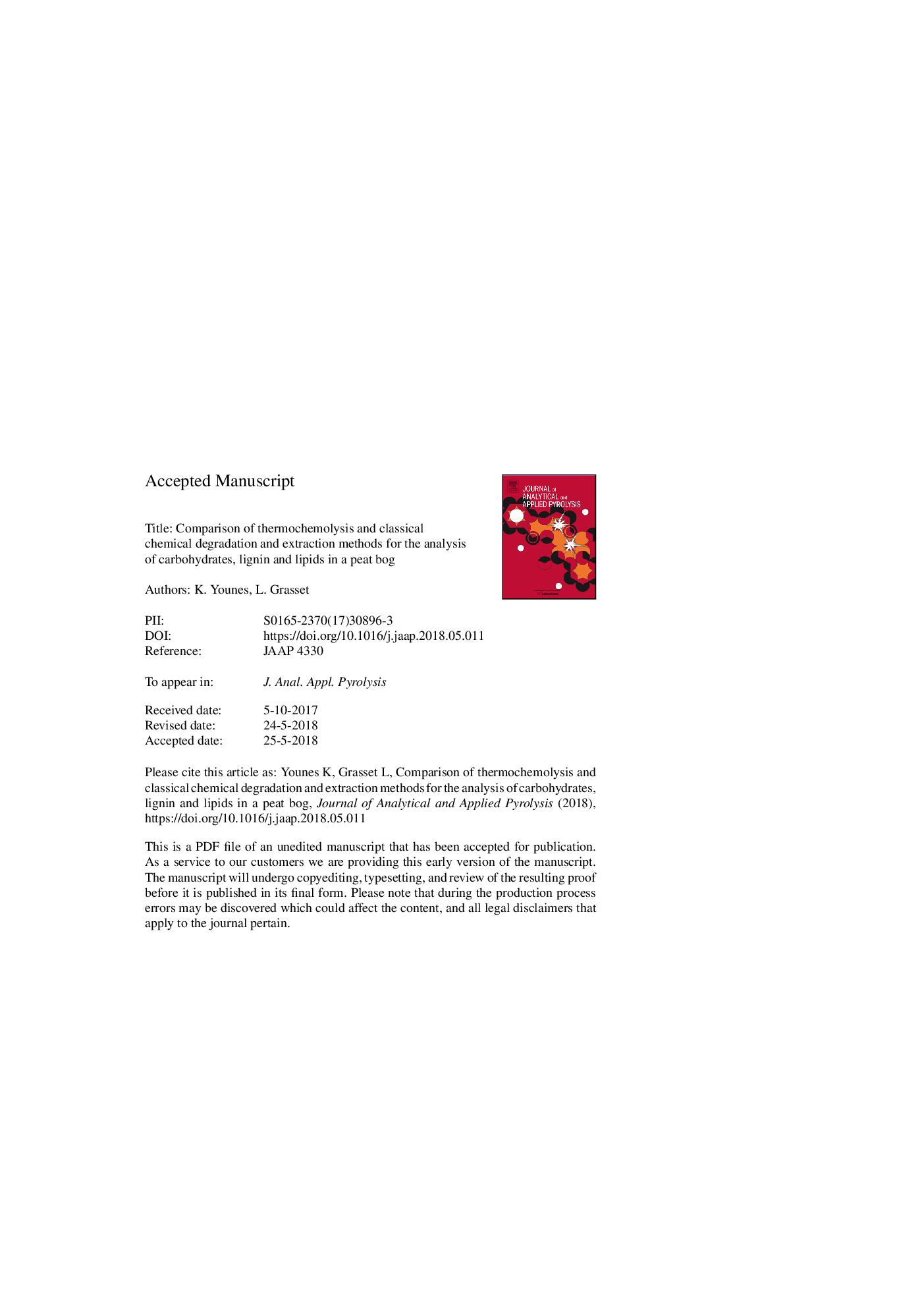| کد مقاله | کد نشریه | سال انتشار | مقاله انگلیسی | نسخه تمام متن |
|---|---|---|---|---|
| 8954826 | 1646047 | 2018 | 34 صفحه PDF | دانلود رایگان |
عنوان انگلیسی مقاله ISI
Comparison of thermochemolysis and classical chemical degradation and extraction methods for the analysis of carbohydrates, lignin and lipids in a peat bog
ترجمه فارسی عنوان
مقایسه روشهای ترموکلیمولیز و کاهش شیمیایی و روشهای استخراج کلاسیک برای تجزیه و تحلیل کربوهیدراتها، لیگنین و لیپیدها در یک بوته ذغال سنگی
دانلود مقاله + سفارش ترجمه
دانلود مقاله ISI انگلیسی
رایگان برای ایرانیان
کلمات کلیدی
موضوعات مرتبط
مهندسی و علوم پایه
شیمی
شیمی آنالیزی یا شیمی تجزیه
چکیده انگلیسی
Published data from different techniques used in the analysis of the main biomolecular families (lignin, carbohydrates and lipids) in 100â¯cm depth peat cores from the Sagnes peat bog (Limousin, France) were compared. Thermochemolysis using tetramethylammonium hydroxide was compared with the classical chemical degradation methods for lignin (CuO-NaOH oxidation) and carbohydrates (acid hydrolysis with HCl), and the Bligh and Dyer extraction method for lipids. Differences observed between the methods are mostly due to the different degradation mechanisms involved in each method. For lignin, the selective cleavage of βO4 aryl ether bonds during thermochemolysis allowed identification of a more oxidized/degraded lignin pool in the deepest part of the peat core. For carbohydrates, the capacity of thermochemolysis to detect free (or terminal) carbohydrates showed an increase in microbial contribution at the interfaces between three distinct peat layers: the acrotelm, the upper part of the peat permanently above the water table; the mesotelm, the layer where water table fluctuations occur; and the catotelm, the bottom layer of peat that is permanently below the water table. For the lipid fraction, thermochemolysis revealed a lipid pool that was more influenced by microbial reworking. These results imply that, depending on the techniques used, the interpretation of the extent of degradation or source could differ. Therefore, TMAH thermochemolysis could be viewed and used as a complementary method of analysis, offering additional molecular data and contributing to a better understanding of the nature and sedimentation processes of organic matter in peat bogs.
ناشر
Database: Elsevier - ScienceDirect (ساینس دایرکت)
Journal: Journal of Analytical and Applied Pyrolysis - Volume 134, September 2018, Pages 61-72
Journal: Journal of Analytical and Applied Pyrolysis - Volume 134, September 2018, Pages 61-72
نویسندگان
K. Younes, L. Grasset,
